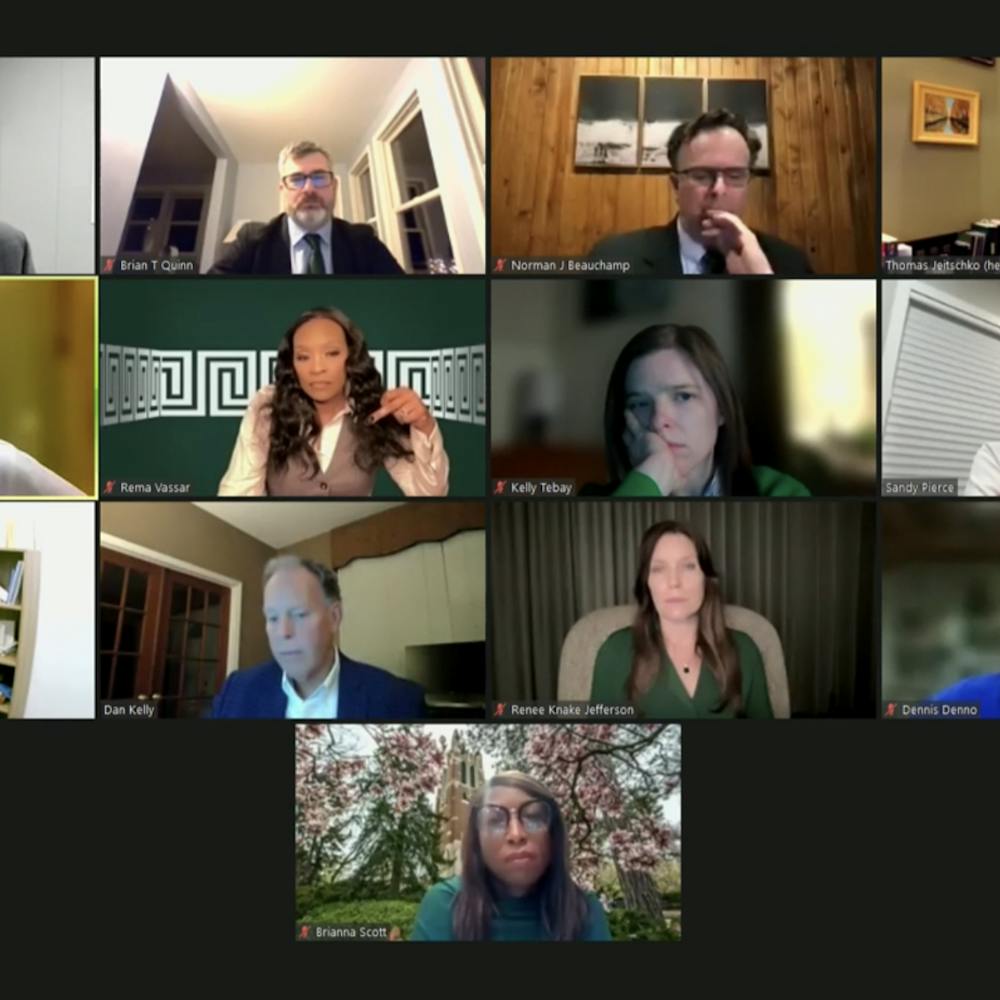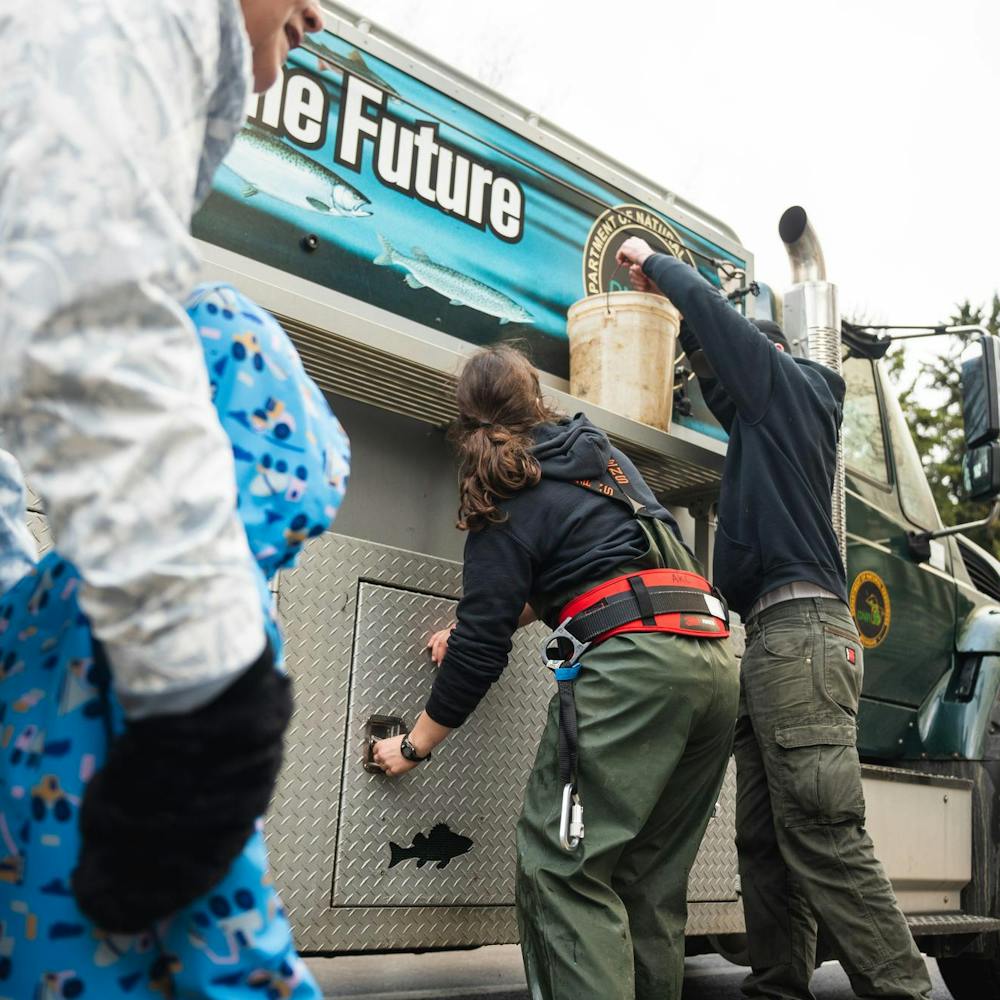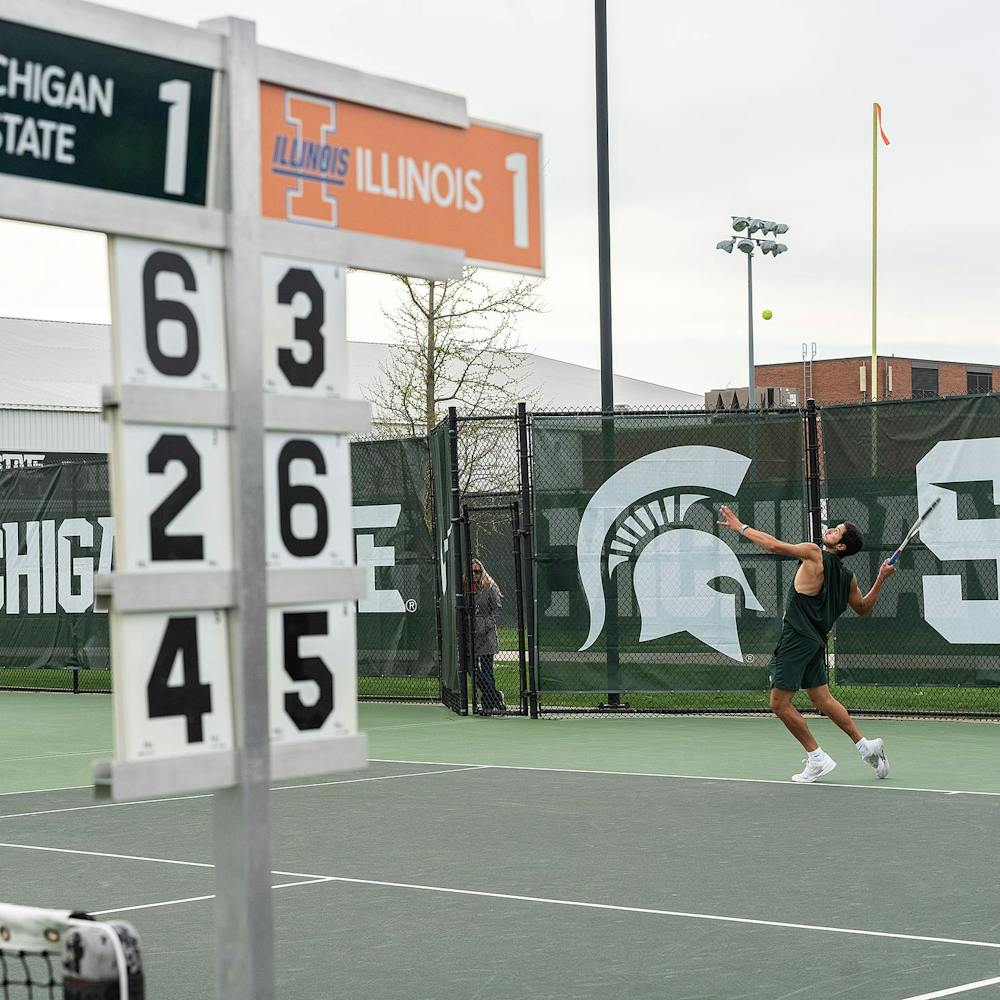Hunched over a laptop, Eric Wood typed commands, hoping to bring a toy Lego car to life.
Suddenly, the car was moving in a straight line.
"It's following this command button here," he said.
Wood, who teaches at Hillsborough County Public Schools in Tampa, Fla., was among the 100 educators who traveled to MSU's College of Engineering Monday as part of the Summer Magnet and Related Training Institute. The conference showcased innovative teaching techniques the K-12 teachers could take back to their classrooms.
The Lego robotics lesson resulted from a partnership between the MSU College of Engineering and Lansing Public Schools.
The program pairs MSU students with K-12 students at Woodcreek Elementary Magnet School and Dwight Rich Middle School Magnet Academy in Lansing to teach the grade school students about math, science and engineering. Together, the students build a robotic car made from Lego parts.
Last year, MSU provided engineering students and funding to help 10 teams in Mid-Michigan schools build Lego cars. Each team requires $3,000 to get started.
In a nation where interest in science and engineering is lagging, the Lego robotics lesson attempts to make K-12 students interested in the subjects, said Tom Wolff, associate dean of engineering undergraduate studies at MSU.
"We feel engineering needs a good pipeline of qualified students," he said. "Even if they don't become engineers, we need that background in our overall society."
Wood was impressed with the lesson.
"You're always looking for something new to get kids interested in a subject," he said. "What 11- or 12-year-olds wouldn't want to play with (a Lego car)?"
Worsie Gregory, director of magnet schools and programs for Lansing Public Schools, said the Lego robotics exercise is one of the most anticipated programs for her students.
"They come there early and they leave late," she said. "They're getting a taste of what fields are out there in math, science and engineering. They're dibbling and dabbling to see what their interests are."
Stephen Shatara, an electrical engineering graduate student, showed educators another project he said students could easily work on - a robotic fish.
Shatara placed a robotic fish he and other engineering students had created in a tank of water. The students created the fish by hollowing out the insides of a toy fish and replacing them with waterproof technology that moved the fish's tail back and forth.
The seventh- to ninth-grade children he worked with quickly figured out how to put the robot's parts together, Shatara said.
"The most interesting part is introducing kids to something I didn't have the chance to learn until college," he said. "It's interesting to see kids who are interested in learning."






